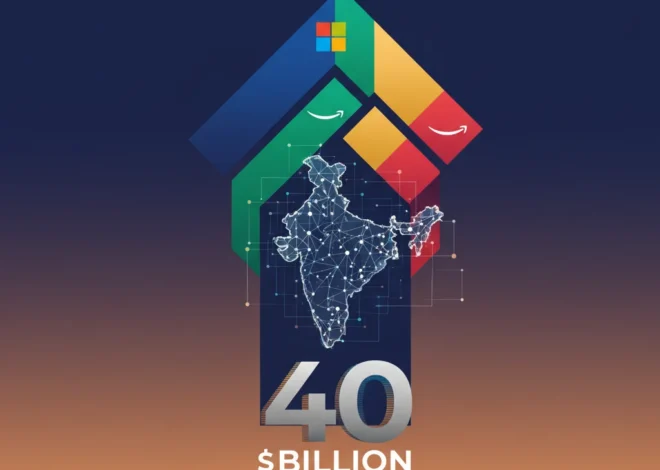Beyond the 404: Unpacking the Global Microsoft Outage and the Fragile Future of the Cloud
It started subtly. A loading screen that wouldn’t resolve. An application that hung in digital limbo. Then, the reports started trickling in, quickly becoming a torrent. Major international services—from London’s Heathrow Airport to the banking giant NatWest and even the blocky world of Minecraft—were suddenly inaccessible. The common thread? They all lean on the digital backbone provided by Microsoft. On April 1st, 2024, a significant portion of Microsoft’s 365 and Azure cloud computing empire stumbled, brought to its knees by a problem in one of the internet’s oldest and most critical systems: the Domain Name System, or DNS.
The BBC reported that this global outage was due to DNS issues, a scenario eerily similar to other recent large-scale internet failures. While services were eventually restored, the event serves as a stark and powerful reminder of the immense, yet surprisingly fragile, infrastructure upon which our modern world is built. It’s a story that goes far beyond a single technical glitch. It’s about digital dominoes, the hidden risks of centralization, and the urgent need for smarter, more resilient systems powered by innovation and artificial intelligence.
For developers, entrepreneurs, and tech leaders, this isn’t just news; it’s a critical case study in the architecture of dependency. Let’s dissect what happened, why it matters, and how we can build a more robust digital future.
The Anatomy of an Outage: What is DNS and Why Did It Break the Internet?
To understand the magnitude of this event, we first need to understand its cause. The culprit, DNS, is often called “the phonebook of the internet.” In simple terms, when you type a web address like “www.google.com” into your browser, your computer doesn’t inherently know where to find it on the vast global network. It needs to look up the corresponding IP address—a numerical label like 172.217.16.195—which is the actual location of the server.
DNS servers are the phonebooks that handle this translation. When a DNS service fails, it’s like every phonebook in the world suddenly vanishing. The websites, services, and applications are still “home” (the servers are running), but no one can find the directions to get there. This is precisely what happened within Microsoft’s ecosystem. A failure in their DNS resolution meant that countless services relying on Azure infrastructure became unreachable, creating a cascading failure that impacted millions of users and businesses worldwide.
This isn’t a new phenomenon, but the scale is escalating. As more of the world’s critical infrastructure—from banking and aviation to government services and entertainment—migrates to a handful of hyper-scale cloud providers, the impact of a single point of failure grows exponentially.
Digital Déjà Vu: A Pattern of Centralized Failure
This Microsoft outage doesn’t exist in a vacuum. It’s part of a recurring pattern of major internet disruptions caused by issues at a core infrastructure provider. These events highlight a systemic vulnerability in the modern internet. While the cloud offers incredible power and scalability, it also concentrates risk.
To put this into perspective, let’s compare some of the most significant outages in recent memory. Each had a different root cause, but all shared a common outcome: widespread disruption due to a failure at a central hub.
The following table provides a snapshot of recent major cloud and CDN (Content Delivery Network) outages:
| Provider & Date | Root Cause | Major Services Affected | Key Takeaway |
|---|---|---|---|
| Microsoft Azure (April 2024) | DNS Resolution Issues | Microsoft 365, Heathrow Airport, NatWest, Minecraft | Core services like DNS remain a critical point of failure even for the largest cloud providers. |
| AWS US-EAST-1 (December 2021) | Network Device Congestion | Netflix, Disney+, Slack, Amazon.com, Ring | A single region of a major cloud provider can have a global impact, highlighting regional dependencies. (source) |
| Fastly (June 2021) | Bug in a Software Update | The Guardian, The New York Times, Reddit, Twitch, UK Government | A single customer pushing a specific configuration triggered a bug that took down 85% of the network. Shows the risk of unforeseen edge cases. |
| Cloudflare (July 2020) | Router Configuration Error | Discord, Feedly, DownDetector, League of Legends | A small configuration error can have a massive, cascading effect across the backbone of the internet. |
This pattern demonstrates that whether the cause is a faulty software update, a network configuration error, or a DNS failure, the result is the same. Our interconnected digital ecosystem is only as strong as its most critical links.
The Ripple Effect: Why a Cloud Outage is Everyone’s Problem
The impact of an outage like this extends far beyond a developer’s dashboard. The financial and reputational costs are immense. A 2022 study by the Uptime Institute found that over 60% of outages result in at least $100,000 in total losses, with a significant portion costing over $1 million (source). But the true cost is measured in more than just dollars.
- For Businesses and Startups: Every minute of downtime is a minute of lost revenue, lost productivity, and eroding customer trust. For a SaaS company, uptime is the product. An outage directly impacts the core value proposition. For an e-commerce platform, it’s lost sales. For a bank, it’s a complete halt to transactions and a blow to customer confidence.
- For Developers and Tech Professionals: These events are a stressful, all-hands-on-deck crisis. They also serve as a harsh lesson in dependency management and system design. It forces teams to confront difficult questions about their architecture. Are our health checks sufficient? Is our failover automation robust enough? Do we truly understand every third-party service our application depends on? Effective programming in the cloud era is as much about resilience as it is about features.
- For the General Public: The abstract concept of “the cloud” becomes painfully real. It’s the inability to check in for a flight, the failure to access work documents, the disruption of online banking, or simply the frustration of not being able to relax with a game. It underscores how deeply integrated these massive, invisible systems are in the fabric of our daily lives.
The Walled Garden's Last Stand: Is the UK About to Topple Apple's App Store Empire?
The AI-Powered Immune System: Can We Automate Resilience?
While the problem is complex, the path forward is illuminated by powerful new technologies, particularly artificial intelligence and machine learning. The sheer scale of modern cloud infrastructure has surpassed the limits of human oversight. We can no longer rely on teams of engineers staring at dashboards to prevent the next big outage. The solution lies in building a kind of digital immune system for our networks—one that can predict, detect, and heal itself automatically.
This is the domain of AIOps (AI for IT Operations). Here’s how it’s changing the game:
- Predictive Analytics: Machine learning models can be trained on vast datasets of network performance metrics. They can learn to identify subtle patterns and anomalies that are precursors to a major failure—a slight increase in latency here, an unusual error rate there. This allows operations teams to intervene proactively before an issue becomes customer-impacting.
- Intelligent Alerting: Instead of drowning in a sea of meaningless alerts, AIOps platforms can correlate events across the stack to pinpoint the true root cause. This drastically reduces the Mean Time to Resolution (MTTR) by directing engineers straight to the source of the problem.
- Automated Remediation: This is the holy grail. Once a problem is identified, automation, guided by AI, can take corrective action. This could mean rerouting traffic away from a failing data center, restarting a problematic service, or rolling back a faulty software deployment—all without human intervention.
- Enhanced Cybersecurity: DNS is a frequent target for cyberattacks like DDoS (Distributed Denial of Service). AI-driven cybersecurity tools are essential for detecting and mitigating these threats in real-time, distinguishing malicious traffic from legitimate user requests with a speed and accuracy no human team could match.
By integrating AI and automation deep into the operational fabric, we can move from a reactive model of firefighting to a proactive model of automated resilience.
Mars is a Software Problem We Haven't Solved Yet
Actionable Takeaways for a More Resilient Future
This Microsoft outage is a teachable moment. Instead of simply waiting for the next one, businesses and developers can take concrete steps to mitigate their risk.
- Embrace Multi-Cloud and Hybrid-Cloud Architectures: Don’t put all your digital eggs in one basket. Spreading workloads across multiple cloud providers (like Azure, AWS, and Google Cloud) or between a public cloud and private infrastructure can provide crucial redundancy. If one provider has a major outage, you can failover critical services to another.
- Prioritize Disaster Recovery (DR) and Business Continuity Planning: A DR plan is not a document that sits on a shelf. It must be a living, breathing part of your operations. Regularly test your failover procedures. Use techniques like Chaos Engineering—intentionally breaking things in a controlled environment—to find weaknesses in your system before they cause a real outage.
- Invest in Observability, Not Just Monitoring: Monitoring tells you when something is broken. Observability helps you understand why it’s broken. Modern software systems are too complex for simple up/down monitoring. You need rich, detailed telemetry (logs, metrics, and traces) and the tools to analyze it effectively.
- Understand Your Dependencies: Map out every single external service your application relies on, from your cloud provider’s core services to third-party APIs for payments or authentication. For each dependency, have a contingency plan. What happens if it fails? Can your application degrade gracefully, or does it collapse entirely?
Conclusion: The Unavoidable Challenge of a Cloud-Native World
The global Microsoft outage was more than a temporary inconvenience; it was a stress test of our collective digital foundation, and it revealed cracks. It demonstrated that even the most sophisticated technology companies are vulnerable to foundational issues. As we continue to build a future powered by ever-more-complex software, ubiquitous SaaS, and intelligent AI, our responsibility to engineer for failure has never been greater.
The solution isn’t to abandon the cloud but to approach it with a new level of maturity and strategic foresight. It requires a commitment to resilient architecture, a deep investment in automation and artificial intelligence for operations, and a clear-eyed understanding of the risks inherent in a centralized, interconnected world. This outage was a warning shot. The businesses and developers who heed it will be the ones who build the enduring, innovative, and reliable services of tomorrow.


